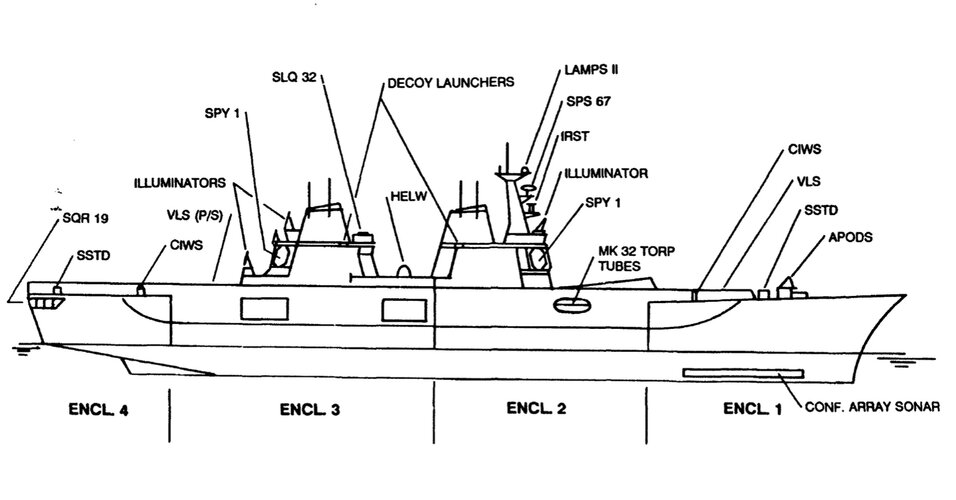Apparently missed a whole pile of things in my previous read-through.
Highly unlikely.
Small carriers are
exponentially worse than large carriers.
A carrier needs AEW, COD, CAP, and a mix of ASW and other-use helicopters, just to keep it safe and let the actual combat group do their thing. This minimum operational coverage looks about like so:
3-5 AEW planes to keep one up 24-7. (5-7 AEW helicopters if you're stuck using helos, because nobody funded the EV-22. Helos don't have the flight time that a fixed wing plane does, so you end up needing more of them in rotation and they're stuck closer to the carrier.)
2-3 COD planes to haul supplies to and from the carrier while at sea.
8 fighters to keep a CAP of two up 24-7
4+ ASW helicopters, and a dozen would be better so you can have one ASW helo in each cardinal direction from the carrier 24/7. This lets your escort ASW helicopters work outside of your escorts instead of between carrier and escorts.
2-3 other helicopters for plane guard while you are doing flight ops, in case a pilot ditches or some flight deck worker gets blown overboard. They do other stuff too, but their primary job on a carrier is rescue.
3-4 Tankers optional, if your mission involves having any given aircraft in the air for long periods. (depending on aircraft, your CODs may be able to double as tankers if they're not needed for cargo)
That's 19-20 aircraft not counting tankers
on the low end. That's more like 36+ aircraft if you're using helos for your AEW (probably won't need tankers except for your mission aircraft though).
Now we can start talking about the mission aircraft we're going to stick on this carrier, for whatever job we want it to do.
ASW? That means long range MPA like the S-3, you're going to want about a dozen of those and a full dozen ASW helos too. Puts you at about 40 aircraft,
and demands that your design has catapults because nobody has designed the SV-22 yet. Or an ASW CL-84... Without a fixed wing MPA? How much fuel can you pack into an EH101 for range, on top of all the ASW gear? Make it probably a dozen ASW Merlins with drop tanks and IFR probes, plus another dozen ASW helicopters whether Merlins or H-60s.
Convoy Escort? Still going to want S-3s, but probably won't need as many ASW helos because you will have more escorts with helicopters. And a baby carrier is a lower priority target than the merchant ships you're guarding. Will probably double the number of fighters to have a bigger CAP available.
Strike? Uh, you need a couple of EW planes, a dozen or so attack planes, plus more tankers. Oh, and probably a full dozen extra fighters, too, to escort that strike package. That's a good 30 aircraft. Can we discard the entire strike mission from any carrier having space for less than 65 aircraft?
See my response above to
@XP67_Moonbat .
A ship with 22 aircraft has the bare minimum air wing to protect itself. It cannot launch strikes, it cannot even deal with a large air attack on itself. Missiles for strike do not belong on the same hull as fixed wing aircraft, because they're just flat better deployed onto that DDG 50+ miles closer to the enemy!
There may be an argument for a carrier with ~96 VLS cells, maybe 128, in 3-4x32 cells. 16-32 cells on each corner, more or less. 20x SM2s, 6x SM-6, and 24x ESSM in each set of 32, reduce proportionally for fewer cells. Though maybe arranged not quite vertical (say, 5-10deg outboard?), so that the boosters don't drop onto the flight deck.
I believe that the idea was to have that carrier use Harriers as Combat Air Patrol to chase the Bears away.
Again, a carrier needs ~22 aircraft just to barely protect itself, and is incapable of doing strike missions or even heavy ASW. And strike missiles are better served by being some 50 miles closer to their target, not on the carrier.
I'd bump that to 8x fighters to maintain a CAP of 2x; and some ASW helicopters to protect the carrier separate from the escorts, call it another 4x just to keep one ASW helo in close to the carrier 24/7. But otherwise I follow the thinking.
That's a very weird idea, so I see why the residents didn't like it much. They're ship captains, damn it, they want to be Aubrey or Nelson and go do cool things! Hell, for the first month after Captain Tammen came to USS Georgia, he'd randomly stick his head into control and order us to go deep and fast, just because he was the captain and he
could. (My favorite captain, FWIW)
And I agree that we might be there now on all the datalinks. They definitely were NOT there in the 1980s or 90s. But unless someone says "I really want to be able to do (X)" it will not be developed.

